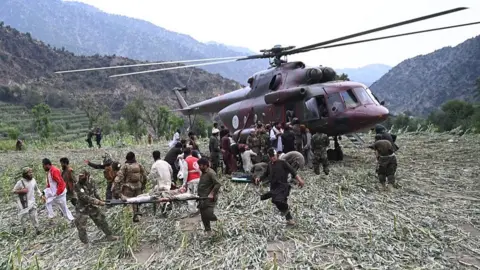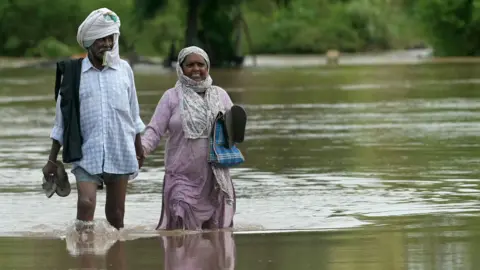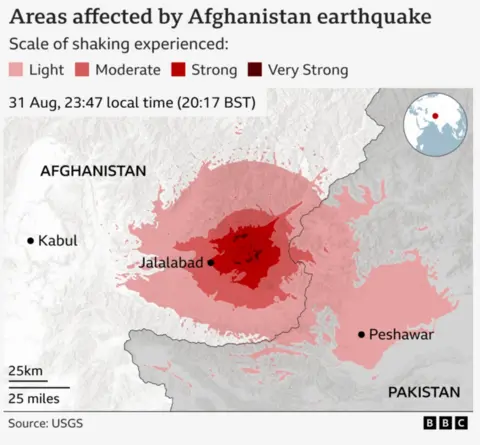As waves several feet high began to hit the islands of Maui, Oahu, and Hawaii, many Hawaiians acted on urgent recommendations from officials to leave low-lying coastal areas for safer ground. The tsunami warning was issued after a powerful earthquake thousands of miles away near Russia, stirring concerns across the Pacific.
The Pacific Tsunami Warning Center warned that the situation could pose ongoing threats for several hours, advising immediate protective measures for lives and property. Governor Josh Green instructed people in vulnerable regions to remain composed and ascend to higher altitudes while expressing hope regarding the anticipated wave heights, with no "wave of consequence" reported thus far.
Traffic congestion marked the evacuation efforts, particularly in Maui, where residents still remember the devastating wildfires from two years prior. Evacuation procedures were multifaceted, with some residents opting to stay in their vehicles at temporary shelters while others hurried to relocate their possessions to safer areas. Traffic was notably heavy, with individuals recounting challenges stemming from increased road usage during emergencies.
Seismologists, including Dr. Lucy Jones, provided context for the tsunami potential, indicating that while Hawaii could see waves several feet high, historical comparisons reveal even higher threats, such as the 42-foot waves from Japan’s catastrophic 2011 tsunami. In reaction to the uncertain forecast, Maui residents expressed varying degrees of caution. Long-time coastal inhabitant David Dorn elucidated a heightened sense of urgency concerning current alerts compared to past warnings that were sometimes treated lightly.
As evacuation operations continued, shelters across the island were prepared, and utilities were addressed to prevent storm damage. Among the evacuees was Felicia Johnson, who recalled her last evacuation during a lesser tsunami event a decade prior. With fears reminiscent of previous natural disasters, she rallied with family and pets as she urged compliance with warnings, noting the contrast to the devastating fire experience that had impacted their community.
From Hawaii to coastal areas of California and Alaska, various regions prepared for the possibility of significant weather phenomena, emphasizing the continuous need for alertness and community preparedness when confronted with natural disasters.
The Pacific Tsunami Warning Center warned that the situation could pose ongoing threats for several hours, advising immediate protective measures for lives and property. Governor Josh Green instructed people in vulnerable regions to remain composed and ascend to higher altitudes while expressing hope regarding the anticipated wave heights, with no "wave of consequence" reported thus far.
Traffic congestion marked the evacuation efforts, particularly in Maui, where residents still remember the devastating wildfires from two years prior. Evacuation procedures were multifaceted, with some residents opting to stay in their vehicles at temporary shelters while others hurried to relocate their possessions to safer areas. Traffic was notably heavy, with individuals recounting challenges stemming from increased road usage during emergencies.
Seismologists, including Dr. Lucy Jones, provided context for the tsunami potential, indicating that while Hawaii could see waves several feet high, historical comparisons reveal even higher threats, such as the 42-foot waves from Japan’s catastrophic 2011 tsunami. In reaction to the uncertain forecast, Maui residents expressed varying degrees of caution. Long-time coastal inhabitant David Dorn elucidated a heightened sense of urgency concerning current alerts compared to past warnings that were sometimes treated lightly.
As evacuation operations continued, shelters across the island were prepared, and utilities were addressed to prevent storm damage. Among the evacuees was Felicia Johnson, who recalled her last evacuation during a lesser tsunami event a decade prior. With fears reminiscent of previous natural disasters, she rallied with family and pets as she urged compliance with warnings, noting the contrast to the devastating fire experience that had impacted their community.
From Hawaii to coastal areas of California and Alaska, various regions prepared for the possibility of significant weather phenomena, emphasizing the continuous need for alertness and community preparedness when confronted with natural disasters.


















